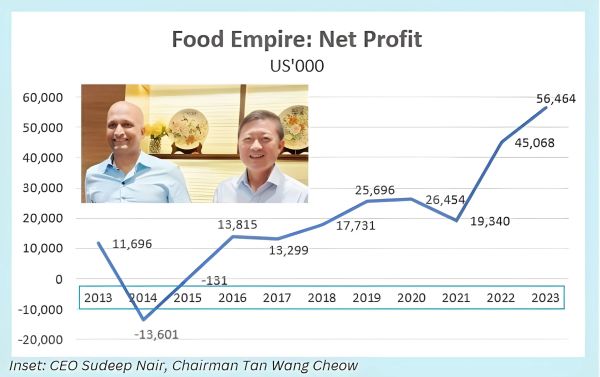 The chart shows the remarkable long-term rise in the profitability of Food Empire. It brings to mind Warren Buffett's saying "Time is the friend of the wonderful business, the enemy of the mediocre". The underlying story of Food Empire gets more impressive when you know that it has been disadvantaged by a factor it has no control over: foreign currency movements. |
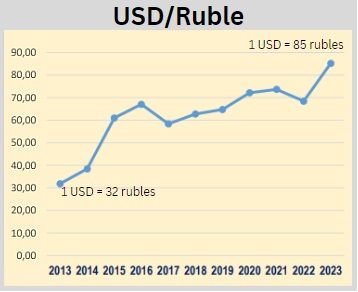 People in Russia, Ukraine and Kazakhstan have been increasingly consuming Food Empire's instant coffee over the years.
People in Russia, Ukraine and Kazakhstan have been increasingly consuming Food Empire's instant coffee over the years.
They pay, of course, in local currencies.
When Food Empire reports its financial results, the local currency sales are converted into USD.
If the local currencies weaken against the USD, the revenue is lower than if the local currency was unchanged, and vice-versa.
Take the Russian ruble. It has weakened horrendously over the past 10 years (see chart).
It now takes nearly 3X more sales in local currency, compared to 10 years ago, to get 1 USD recognised on Food Empire's financial statement.
This challenge could have decimated Food Empire's USD revenue from Russia but it didn't, as the chart below shows.
And notably, since 2020 Russian revenue in USD has shot up year after year.
Why? Because of its brand power, which enabled Food Empire to increase its selling prices, as CEO Sudeep Nair says.
And Food Empire continued to sell even more volume.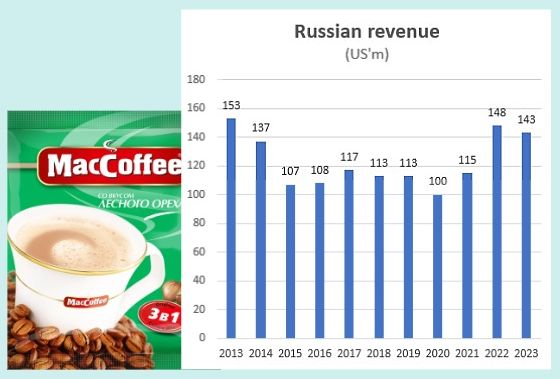
It's a similar story for Kazakhstan and Ukraine currencies and the sales in USD terms that Food Empire derives from there as the charts below demonstrate.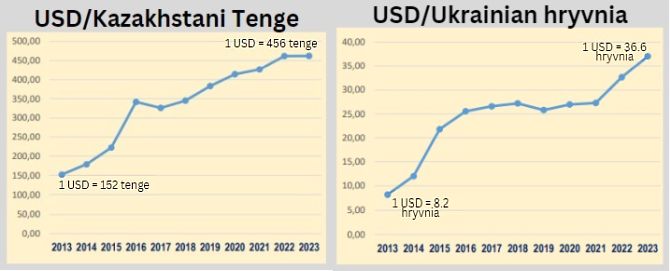
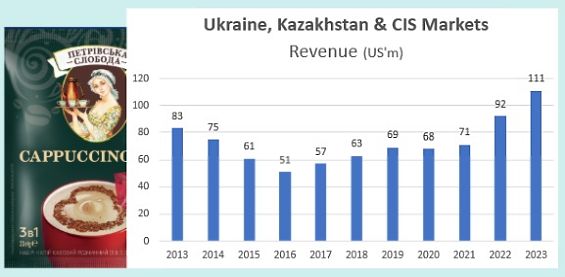
10 years ago, Food Empire was deriving 100% of its revenue from Russia, Ukraine and the CIS markets.
In subsequent years, in addition to taking root and growing sales volume in those countries, Food Empire sought to grow in other markets -- principally Southeast Asia and India.
And it ventured into producing other products -- mainly non-diary creamer, which is a key ingredient for its ultimate coffeemix products. It also sells its non-diary creamer to third parties.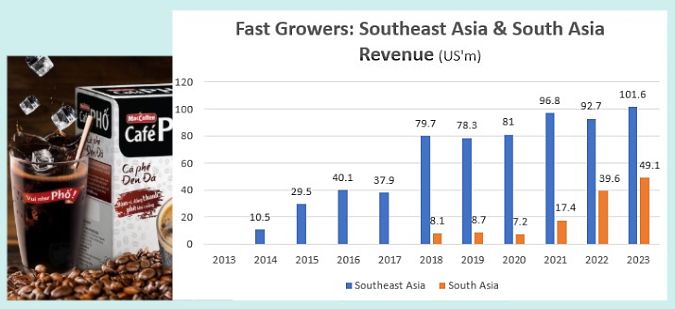
From the chart, see how the Southeast Asia market shot up from US$10 million in 2014 to US$102 million in 2023, driven by coffeemix sales in Vietnam and non-diary creamer sales from Malaysia.
Southasia is represented mainly by India where Food Empire manufactures freeze dry coffee and spray dry coffee in 2 plants.
Food Empire says it will continue to invest in production assets while it expects its coffeemix products to sell even higher volumes for many years to come. No, the end is not in sight. 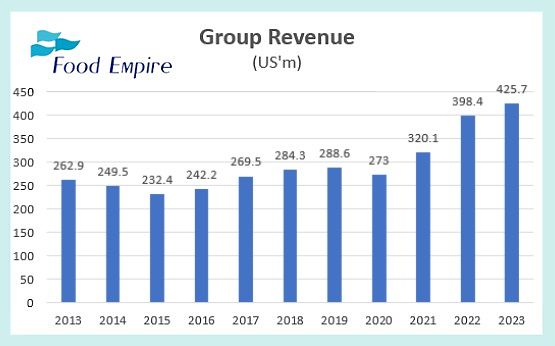
Will the above chart show ever higher peaks in the coming years and provide further evidence that Food Empire is a "wonderful business" for whom time is a friend?
See also: These 2 stocks just surprised with juicy dividends





